| Origem | Literatura Estrangeira |
|---|---|
| Quantidade de Páginas | 234 |
| Acabamento | Capa Comum |
| Autores | Iza n. Steiner |
| Idioma | Inglês |
| Edição | 0 |
| Selo | Iza N. Steiner |
 TDICs e Sociologia: propostas pedago?gicas (volume 1)
TDICs e Sociologia: propostas pedago?gicas (volume 1)
Editora Café com Sociologia
R$ 45,90 à vista Sociologia: ensino médio - Poder e Política (Vol.4)
Sociologia: ensino médio - Poder e Política (Vol.4)
Editora Café com Sociologia
R$ 70,90 à vista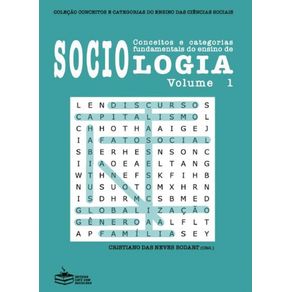 Conceitos e categorias do ensino de Sociologia, vol.1
Conceitos e categorias do ensino de Sociologia, vol.1
Editora Café com Sociologia
R$ 43,90 à vista Construindo Contextos: Uma contribuição sociológica para compreender a relação indivíduo e sociedade
Construindo Contextos: Uma contribuição sociológica para compreender a relação indivíduo e sociedade
Editora Viseu
R$ 53,03 à vista Processos da cena cosplay: Conexões entre jogo e teatro na prática em São Luís
Processos da cena cosplay: Conexões entre jogo e teatro na prática em São Luís
Editora Viseu
R$ 40,90 à vista Fazer-se um corpo no funk
Fazer-se um corpo no funk
Editora Viseu
R$ 40,90 à vista A Therapists Guide
A Therapists Guide
PATH
R$ 115,76 ou até 2x sem juros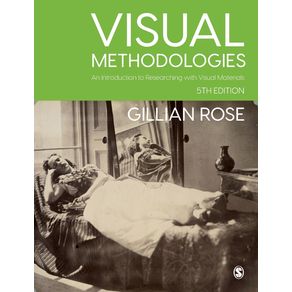 Visual Methodologies
Visual Methodologies
Sage Publications
R$ 485,02 ou até 3x sem juros A Way of Being
A Way of Being
HARPERCOLLINS
R$ 122,77 ou até 2x sem juros Polemica in Difesa Della Scuola Criminale Positiva
Polemica in Difesa Della Scuola Criminale Positiva
Legare Street Press
R$ 240,89 ou até 3x sem juros Genres of Listening
Genres of Listening
Duke University Press
R$ 230,93 ou até 3x sem juros TROLLRÚN
TROLLRÚN
Hadean Press Limited
R$ 182,59 ou até 3x sem juros International Handbook of Population Policies
International Handbook of Population Policies
Springer Nature B.V.
R$ 2.268,03 ou até 3x sem juros Surfside
Surfside
Indy Pub
R$ 118,01 ou até 2x sem juros Doing Document Analysis
Doing Document Analysis
Sage Publications
R$ 388,03 ou até 3x sem juros Ensaios de A a Z para mentes inquietas
Ensaios de A a Z para mentes inquietas
Ferreira Branco, Clécio
R$ 69,90 à vista A justiça mais injusta
A justiça mais injusta
Telha
R$ 52,00 à vista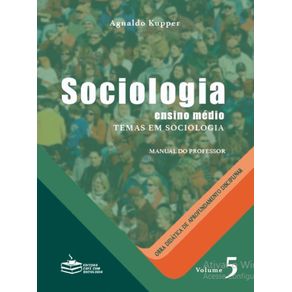 Sociologia: ensino médio - Temas de Sociologia (Vol.5)
Sociologia: ensino médio - Temas de Sociologia (Vol.5)
Editora Café com Sociologia
R$ 69,90 à vista Sociologia: ensino médio - Conhecendo a Sociologia (Vol.1)
Sociologia: ensino médio - Conhecendo a Sociologia (Vol.1)
Editora Café com Sociologia
R$ 70,90 à vista O Enfraquecimento do Pai
O Enfraquecimento do Pai
Editora Viseu
R$ 40,90 à vista Visual Methodologies
Visual Methodologies
Sage Publications
R$ 485,02 ou até 3x sem juros Realist Criminology
Realist Criminology
Springer Nature B.V.
R$ 344,44 ou até 3x sem juros Buddhism in Iran
Buddhism in Iran
Springer Nature B.V.
R$ 350,56 ou até 3x sem juros The Definitive Guide to Thriving on Disruption
The Definitive Guide to Thriving on Disruption
Disruptive Futures Institute
R$ 250,93 ou até 3x sem juros Genres of Listening
Genres of Listening
Duke University Press
R$ 230,93 ou até 3x sem juros International Handbook of Population Policies
International Handbook of Population Policies
Springer Nature B.V.
R$ 2.268,03 ou até 3x sem juros The Positivity Workbook for Teens
The Positivity Workbook for Teens
ReadHowYouWant.com Pty Limited
R$ 161,71 ou até 3x sem juros Woman and the New Race
Woman and the New Race
Cosimo
R$ 158,15 ou até 3x sem juros Surfside
Surfside
Indy Pub
R$ 118,01 ou até 2x sem juros Doing Document Analysis
Doing Document Analysis
Sage Publications
R$ 388,03 ou até 3x sem juros A era da empatia
A era da empatia
Companhia das Letras
R$ 89,90 à vista Sociologia: ensino médio - Poder e Política (Vol.4)
Sociologia: ensino médio - Poder e Política (Vol.4)
Editora Café com Sociologia
R$ 70,90 à vista A coopetição como estratégia de fortalecimento das capacidades dinâmicas
A coopetição como estratégia de fortalecimento das capacidades dinâmicas
Editora Viseu
R$ 47,90 à vista Mitos, arquétipos e narrativa
Mitos, arquétipos e narrativa
Editora Viseu
R$ 38,90 à vista Fazer-se um corpo no funk
Fazer-se um corpo no funk
Editora Viseu
R$ 40,90 à vista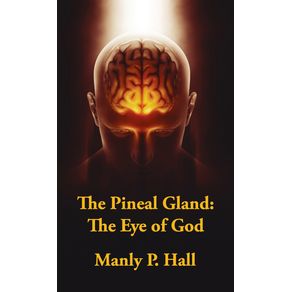 Pineal Gland Hardcover
Pineal Gland Hardcover
Lushena Books
R$ 98,88 à vista Realist Criminology
Realist Criminology
Springer Nature B.V.
R$ 344,44 ou até 3x sem juros TV Lobotomy
TV Lobotomy
Max Milo Editions
R$ 157,43 ou até 3x sem juros Polemica in Difesa Della Scuola Criminale Positiva
Polemica in Difesa Della Scuola Criminale Positiva
Legare Street Press
R$ 240,89 ou até 3x sem juros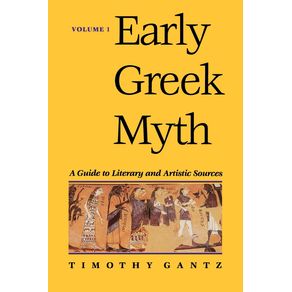 Early Greek Myth
Early Greek Myth
Hopkins Fulfillment Service
R$ 340,67 ou até 3x sem juros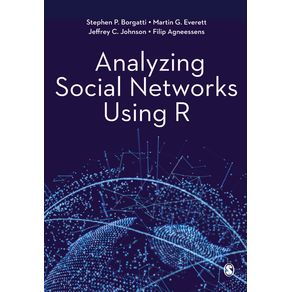 Analyzing Social Networks Using R
Analyzing Social Networks Using R
Sage Publications
R$ 415,55 ou até 3x sem juros Right To Die?
Right To Die?
IVP Books
R$ 176,15 ou até 3x sem juros Applied Statistics Using Stata
Applied Statistics Using Stata
Sage Publications
R$ 449,95 ou até 3x sem juros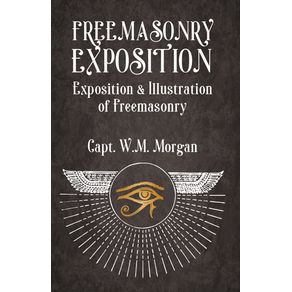 Freemasonry Exposition
Freemasonry Exposition
Lushena Books
R$ 88,36 à vista Decline and Prosper!
Decline and Prosper!
Springer Nature B.V.
R$ 279,46 ou até 3x sem juros